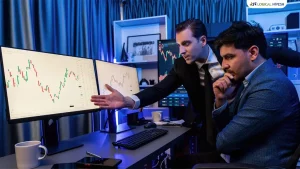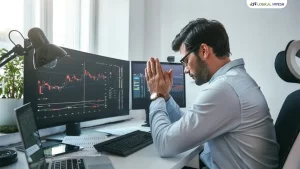In this rollercoaster world of trading and the stock market, one has to be prepared for anything- be it a sudden inflow of finance or God forbid, a downfall. And money management is something that keeps you at bay from the sorrows that come from the ups and downs of that ride.
What is Money Management?

This ritual lets you keep your capital safe and streamline your trading performance accordingly. A sound knowledge of money management not only helps you survive in the financial market but also keeps you safe in the long run. If you are able to manage your risk well, you certainly have mastered the art of knowing the right position sizes, how to place your stop losses as well as move them, and always consider the risk/return ratio. With the right money management, you can trade in the market without dealing with any stress and worry in the world.
That is why we at Logical Nivesh bring you the professional expertise of our SEBI-certified research analyst, which will help you keep your boat afloat even during a crisis. Other than offering some of the best stock market courses in India, we also make sure that regular trading formulas should be accessible to all. So go through these basic points that will help you stay on the right track of trading.
1. Fixed Fractional Method
To go ahead with this method, you have to buy a stock for a specific amount of money, e.g., ₹ 8,500 as a matter of fact. Then wait for a while till the value of that stock goes up, say double up your first investment, to ₹ 17,000, then you can rely on that company or entity’s stock health and invest more in it, i.e., buy more stocks of the same. It systematically reduces the risk you undertake with that particular company’s stocks.
2. The 2% Rule Method
If you abide by this commandment of stock market investment, then do not even think about spending more than 2% of your entire bank balance for one and each trade. Although considered a very old-fashioned approach, but it is perfect for beginners and those traders who are reluctant to take high risk and want to keep a tab on it. It will help the novice ones in playing it safe till they build their confidence and gain valuable experience.
On the other hand, it is also considered a good method for trading accounts with more than ₹ 10,00,000 as it is not entirely a growth-orientated method. Now every SEBI registered research analyst like ours can help you navigate through these alleys of the trading world.
3. Optimal F Method: An Easy Way to Keep it Going
This mathematical model helps in finding out f, which is an abbreviation for “fraction”. The approach determines the ideal fraction from a given set of trades to generate higher returns than any other fraction. On the one hand, it has great growth potential, on the other hand, it is prone to ruinous risks.
Under this method, you can establish your position size and to achieve that, you need to rely on your past performance. Just go through all the trades that helped you make profits in the past, then calculate an average position size that can be your baseline position size. Make the most of this baseline for each of your future trades. In case you want to understand this method and its implications, you can give a try to its inventor, Ralph Vince’s books.
4. Secure F Method: Simple to Follow, Yet an Enigma to Implement!
Some traders and industry veterans call this method, the most refined money management rule of trading. It is also renowned among the trading community as a better version of the Optimal F Method. It includes narrowing down to the position size that yielded you the maximum returns on investment on all your previous trades. And when the position size is finalised, the same is utilised for all future trading purposes. Proficient traders often say that the risks under Secure F Method can still be managed but they only come at the cost of geometric growth.
This method might make sense to only a few finance fanatics as its practical applications are not that renowned, other than that single ‘international’ event (though quite famous) when Larry Williams won the World Trading Competition by turning $10,000 into $1.1 million under a timeframe of just 1 year.
5. Fixed Ratio Method
Some traders agree that it is almost like the Fixed Fractional Method where a certain amount is invested in a stock for an already set amount of profit and can be reinvested for more stock purchase. Some traders, on the other hand, have a different theory which they back with Ryan Jones’ book, “The Trading Game: Playing by the Numbers to Make Millions”. According to him, the Fixed Ratio Method focuses on making profits rather than focusing on the size of the account. The trader has to focus on just one variable which is “Delta”. Let’s understand it with an example.
Suppose Delta is an amount of ₹ 4,000. Now every time ₹ 4,000 per contract is made in profits, the position size increases accordingly. To find out Delta, the maximum drawdown of your trading plan has to be determined first. Conclusion: Now you have more clarity on how money management in trading is entirely different from money management in general. So keep these commandments of the stock market in your mind while making an investment, especially if you are a beginner. Moreover, if other than a money management course, you are looking for a technical analysis course in India, Logical Nivesh Academy is your place to be.







